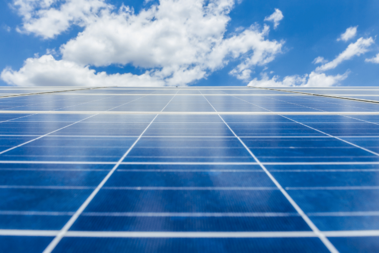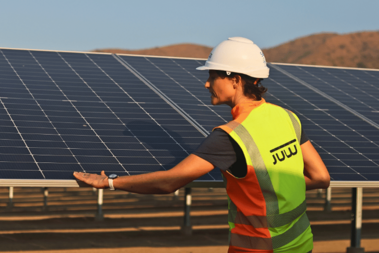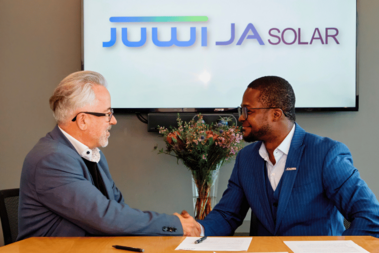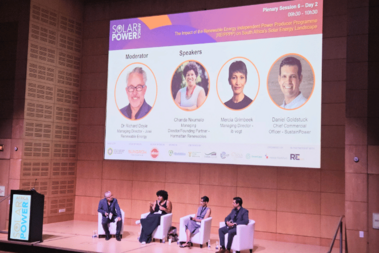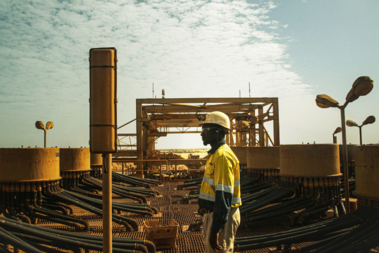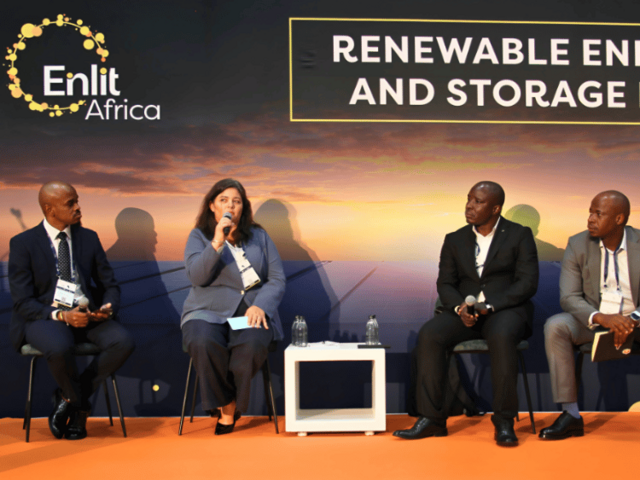
Six strategies to unlock Africa’s grid capacity
As Africa’s clean energy transition gathers momentum, one of the biggest challenges is how to expand grid capacity fast enough.
The panel explored this challenge, sharing their insights and recommendations for integrating renewables, unlocking investment and building more flexible and resilient grids.
The conversation highlighted that solving the grid challenge is as much about building new infrastructure as it is about good planning, policy, finance and increasingly, regional cooperation.
Plan infrastructure around future energy geography
The grid in most African countries reflects legacy energy priorities (eg around coal in SA or hydro in Zambia) rather than the current geography of renewable energy potential.
In SA, the grid was designed to export electricity from coal fields in the north-east, not to support large-scale solar and wind generation in the Cape provinces.
While grid strengthening is under way to meet this new reality, it comes at high cost and typically takes at least seven years from concept to operation.
This mismatch, seen in many other countries, becomes particularly challenging when dispatchable hydro or large scale energy storage is limited or unavailable.
In such cases, effective grid planning and investment in flexible technologies are critical.
Adding to the complexity are long infrastructure lead times. Building a 400kV transmission line can take up to seven years (a best case scenario).
This makes tools like transmission development plans (TDPs) essential for aligning project development (especially that of the private sector) with future grid availability.
In SA’s case, delays in executing the TDP affect how confidently it is regarded by developers and investors, however.
Repurpose existing assets to speed up renewable integration
One of the fastest and most pragmatic ways highlighted to unlock renewable energy is to repurpose existing infrastructure.
SA’s Eskom is developing, or will develop, renewable projects at decommissioned coal power stations that already have grid connections, substations, and land. These sites offer an immediate opportunity to add new capacity without putting additional pressure on grid-constrained areas, or without competing with developers that need grid.
In addition, refurbishment of pumped hydro storage systems offers an affordable, proven method for managing peak demand and balancing variability; particularly important as solar and wind capacity expands.
Use tailored finance and tariff models to unlock investment in Africa’s grid capacity
Expanding the grid at the pace required will depend on enabling finance models that reduce pressure on public funding.
Several countries are exploring alternative approaches, including independent transmission projects, public-private partnerships, and rolling out dedicated grids for bulk industrial and mining users.
Attracting private capital into grid infrastructure requires clear and predictable revenue frameworks.
Time-of-use (TOU) tariffs and wheeling arrangements are beginning to create the price signals and opportunities needed to guide investment, not just into generation, but also into ancillary services such as grid-forming inverters, energy storage and flexible dispatch.
However painful, tariffs must reflect the true cost of transmission. While equity and affordability are key considerations and can be addressed through different tariff bands, such as in Nigeria, under-pricing transmission discourages investment in the very infrastructure needed to improve access and reliability.
Use curtailment and storage as tools for flexibility
Curtailment is often viewed as a risk, but in a constrained grid it can be a valuable tool. In SA, estimates suggest that allowing curtailment up to 10% curtailment in high-resource regions could unlock an additional 3.5GW of wind capacity.
The newly approved congestion curtailment framework which includes compensation for IPPs offers a way to bring projects online faster while long-term upgrades are under way.
System flexibility is also being improved in a number of countries through the deployment of battery energy storage systems (BESS) at distribution and transmission levels, and investment in long-duration pumped hydro at utility scale.
Both play an increasingly vital role in managing grid stability as variable renewable penetration increases.
Invest in regional interconnectors to strengthen cross-border resilience
Many of the most impactful grid upgrades may not be national, but regional.
Cross-border interconnectors (high voltage lines connecting countries) are vital for electricity trade, balancing supply and demand, and improving overall system resilience. However, many interconnectors are still underdeveloped or lack the capacity to meet future needs.
The IPP Office has begun addressing this gap, issuing a request for proposals (RFP) for independent transmission providers. A suggestion was made that SAPP could go further by issuing dedicated tenders for interconnectors, helping to strengthen shared infrastructure and unlock regional trade.
Follow through to maintain market confidence
Across the continent, energy policy is moving in the right direction. Many countries are opening up markets, reforming regulation, and setting ambitious renewable energy targets. But the real test is in implementation.
Delays in grid procurement, permitting, or infrastructure rollout can quickly erode investor confidence and stall progress. The priority now is to ensure that policy reform is matched by clear timelines, transparent processes and consistent execution.
With long-term planning, cost-reflective pricing and strong coordination (both within and between countries) Africa can build the grid it needs to support a just, reliable, and accelerated energy transition.
The panelists were: Beth O’Connor, Senior Project Development Manager, JUWI SA; Melusi Thabalala CEO, Mesama Energy (Moderator); Godwin Afamefuna Aguiyi, Assistant General Manager,Transmission Company of Nigeria; Vincent Nyirenda, Chief Projects Officer, Copperbelt Energy Corporation Zambia; and Rivoningo Mnisi, Group Executive, Eskom Renewables.
This article was first published on ESI Africa.



